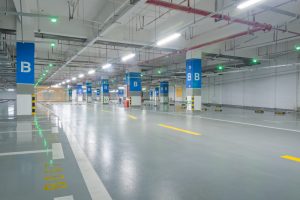Modern Back Treatment and You
11/7/22

Back pain can be more serious than it seems initially. There are people who have gotten whiplash without actually knowing about it. If you’ve been involved in even a seemingly mild car accident of any kind, seeing a doctor is essential for that reason and others. Your injuries might not be severe, but difficult medical problems won’t always feel like they’re substantial at first.
A pulled muscle in the back won’t be as potentially damaging. However, it can cause an ache across the upper back that you’ll notice all throughout the day. Patients will get a sharp pain in their back when bending over and when standing. They’ll probably feel persistent levels of back pain while walking and completing other simple activities. It’s easy to brush this off as minor, but if back pain ever persists like this, it could save your life just to have it looked at. Spinal injuries, cysts, nerve damage, fractures, and a host of other problems can accelerate in severity quickly. Knowing what the problem is can help you heal more effectively.
That said, for some patients, the back pain won’t go away easily. There are people who will try to work around it, but that won’t be possible with certain levels of consistent back pain. Physical therapists have managed to help lots of patients who have suffered from chronic symptoms related to pain.
Back Pain May Soon Be a Problem of the Past Thanks to New Technologies

Back pain can be completely debilitating to every day life for some people, but fortunately, new technological advances may be the answer patients have been looking for.
Tap Into Summit reports that a new 3-D imaging system for spinal surgeries has been implemented by Overlook Medical Center and Morristown Medical Center, both part of Atlantic Health System.
The Medtronic O-arm Intra-operative Imaging System and the StealthStation Surgical Navigation System combine mobility, low-dose X-ray imaging, and ultra-fast image processing to provide surgeons with real-time 3-D navigation during procedures.
The ability to obtain detailed images during the operation without having to move the patient allows for more accurate placement of hardware, typically using smaller incisions; reduced surgical time; decreased blood loss and muscle tissue damage; and quicker, less painful recovery than any older technologies can provide.
While this technology can enhance the effectiveness of back surgeries, their operation still requires extensive training, as well as an in-depth knowledge of the spine.
Rather than making large incisions to get a good view of the spine, the Medtronic’s flexible O-arm is able to navigate through very small portables with no damage to the surrounding muscle.
“The O-arm allows visualization of the intricate anatomy of the spinal segments, especially when the spine is deformed or has had previous surgery, which is crucial to the safe and effective performance of the procedure,” says Jason E. Lowenstein, MD, orthopedic surgeon and specialist in scoliosis and spinal deformity surgery at Morristown Medical Center.
So far, the Medtronic has been used to treat conditions such as spinal deformities, MIS spine fusions, spinal tumors, and revision surgery.
As the technology progresses, this mechanism could be used for more extensive operations, including an artificial cervical disc replacement. This procedure involves replacing a damaged disc between two vertebrae with an artificial disc to preserve motion.
But the Overlook Medical Center and Morristown Medical Center’s physicians are not the only one’s making use of new technologies.
The Capital Medical Center has begun using a state-of-the-art guidance system for spine surgery called the Mazor Robotics Renaissance, as Thurston Talk reports.
Capital Medical Center is the first hospital in Washington to utilize robotic-guided spine operations.
“Capital Medical Center is committed to bringing advanced technology and the best treatment options to our patients,” said Jim Geist, the center’s CEO.
As with the Medtronic, this mechanism allows for less invasive surgery, meaning smaller incisions, shorter hospitalizations, less pain, and faster recovery for patients.
Before the actual surgery, doctors pre-plan using a CT-based 3-D simulation of the patient’s spine created by the Renaissance. During the procedure, the Renaissance guides the surgeons tools to precise location, according to the previously designed plans.
The Renaissance has been clinically validated to ensure 1.5 mm accuracy as compared to freehand spine surgery.






